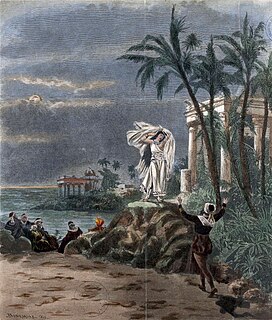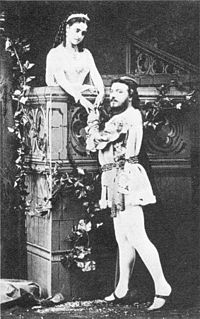 W
WLes dragons de Villars is an opéra-comique in three acts by Aimé Maillart to a libretto by Lockroy and Eugène Cormon. The story of the opera was said to have been borrowed from La Petite Fadette by George Sand, updated by the librettists to the time of Louis XIV. It was premiered by the Théâtre Lyrique in Paris on 19 September 1856. It is also known by the English title The Hermit's Bell
 W
WFaust is an opera in five acts by Charles Gounod to a French libretto by Jules Barbier and Michel Carré from Carré's play Faust et Marguerite, in turn loosely based on Johann Wolfgang von Goethe's Faust, Part One. It debuted at the Théâtre Lyrique on the Boulevard du Temple in Paris on 19 March 1859, with influential sets designed by Charles-Antoine Cambon and Joseph Thierry, Jean Émile Daran, Édouard Desplechin, and Philippe Chaperon.
 W
WLa jolie fille de Perth is an opera in four acts by Georges Bizet (1838–1875), from a libretto by Jules-Henri Vernoy de Saint-Georges and Jules Adenis, after the 1828 novel The Fair Maid of Perth by Sir Walter Scott. Many writers have reserved severe criticism for the librettists for their stock devices and improbable events, while praising Bizet's advance on his earlier operas in construction of set pieces and his striking melodic and instrumental ideas.
 W
WLes pêcheurs de perles is an opera in three acts by the French composer Georges Bizet, to a libretto by Eugène Cormon and Michel Carré. It was premiered on 30 September 1863 at the Théâtre Lyrique in Paris, and was given 18 performances in its initial run. Set in ancient times on the island of Ceylon, the opera tells the story of how two men's vow of eternal friendship is threatened by their love for the same woman, whose own dilemma is the conflict between secular love and her sacred oath as a priestess. The friendship duet "Au fond du temple saint", generally known as "The Pearl Fishers Duet", is one of the best-known in Western opera.
 W
WLa poupée de Nuremberg is a one-act opéra comique by Adolphe Adam to a libretto by Adolphe de Leuven and Arthur de Beauplan. The story is based on E. T. A. Hoffmann’s short story Der Sandmann. The work predates other stage adaptations of Hoffmann's tale, Coppélia and The Tales of Hoffmann.
 W
WRoméo et Juliette is an opera in five acts by Charles Gounod to a French libretto by Jules Barbier and Michel Carré, based on Romeo and Juliet by William Shakespeare. It was first performed at the Théâtre Lyrique, Paris on 27 April 1867. This opera is notable for the series of four duets for the main characters and the waltz song "Je veux vivre" for the soprano.
 W
WSi j'étais roi is an opéra comique in three acts by Adolphe Adam. The libretto was written by Adolphe d'Ennery and Jules-Henri Brésil. It was first performed in Paris at the Théâtre Lyrique on 4 September 1852, opening with a dual cast to allow performance on successive evenings. The production was considered lavish, with expensive costumes and jewels being worn by the cast.
 W
WLa statue is an opera in three acts and five tableaux by Ernest Reyer to the libretto by Michel Carré and Jules Barbier based on tales from One Thousand and One Nights and La statue merveilleuse, an 1810 carnival play by Alain-René Lesage and Jacques-Philippe d'Orneval.
 W
WLes Troyens is a French grand opera in five acts by Hector Berlioz. The libretto was written by Berlioz himself from Virgil's epic poem the Aeneid; the score was composed between 1856 and 1858. Les Troyens is Berlioz's most ambitious work, the summation of his entire artistic career, but he did not live to see it performed in its entirety. Under the title Les Troyens à Carthage, the last three acts were premièred with many cuts by Léon Carvalho's company, the Théâtre Lyrique, at their theatre on the Place du Châtelet in Paris on 4 November 1863, with 21 repeat performances. After decades of neglect, today the opera is considered by some music critics as one of the finest ever written.